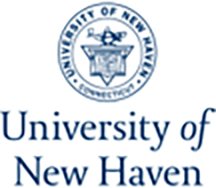Date of Submission
12-2024
Document Type
Thesis
Degree Name
Master of Arts in Marine Policy and Management
Department
Marine and Environmental Programs
Advisor
Jean-Paul Simjouw, Ph.D.
Committee Member
Karin Jakubowski, Ph.D.
Committee Member
Katrina Vickery, M.S.
Keywords
Plastics and Other Solid Waste Debris (PSWD), Single-use plastics, Aquatic Systems, New Haven City (Connecticut), Characteristics, Sources
MeSH
Plastics, Ecosystem, Water pollution
LCSH
Plastic scrap, Plastic Marine Debris, Marine ecology, Freshwater ecology, New Haven (Conn.)--Maps
Abstract
Plastic debris remains a major problem in aquatic ecosystems. This study provides an assessment of the proportion, potential sources, and geographic origin of plastics and other solid waste debris (PSWD) in both freshwater and marine systems in New Haven City, Connecticut. Data was collected through four (4) cleanup events within the Long Wharf Park (LWP) and West River Memorial Park (WRMP), working with community scientists in the New Haven area (CT) in May, September, and October, 2024. A total gross weight of 417 lb of PSWD was collected in approximately 1.4 km (0.9 mile) altogether in LWP and WRMP. The study sorted and analyzed 35% (146 lb) of the total gross weight of the debris collected that consisted of 2945 items. Plastic food and beverage-related items (35.9%) were the most common items, followed by non-plastic debris that comprised glass, metal, wood, paper, and fabric items (33.85%) and other plastic items (13.99%), such as plastic caps, pieces of hard and soft plastics, and household plastics (e.g., toys, cloth hangers, etc.). A large fraction of the PSWD (56.9%, n=1676) collected were single-use plastics (SUPs) dominated by food wrappers, small/miniature liquor bottles (nips bottles), and cigarette butts associated with Frito-Lay, Sazerac, and Newport tobacco brands, respectively. Most of the brands of PSWD (72.3%, n=1187) identified with intact labels originated from the United States (US). In addition, items (27.7%, n=455) that originated from countries outside the US (11 countries in total) also had distributors within the US. A chi-square test of independence revealed a statistically significant association between the study sites and the proportion of SUPs by use categories (X² = 216.004, p = < 0.001). Also, a conceptual model and semi-quantitative analysis revealed that nip bottles were ubiquitous among all the SUPs; these items can easily leak through different ecosystems, i.e., from freshwater to marine systems. Across the study sites, land-based activity indicator items formed the majority of the debris (LWP=98.52%, WRMP=86.4%) compared to waterways/marine indicator items (LWP=0.2%, WRMP=0.6%). Based on the findings, recommendations for PSWD management in Connecticut could include the following actions: (a) increasing awareness on littering, dumping, and smoking regulations together with surveillance at public parks and beaches; (b) refining guidelines to allocate a quota of funds accrued from the surcharge program on nips to specifically search and clean up nip bottles; and (c) expanding the extended producer responsibility (EPR) program for SUPs.
Recommended Citation
Adomako, Ohene Boakye, "Characteristics and Potential Sources of Single-use Plastics Debris in Two Aquatic Systems in New Haven, Connecticut" (2024). Master's Theses. 252.
https://digitalcommons.newhaven.edu/masterstheses/252

